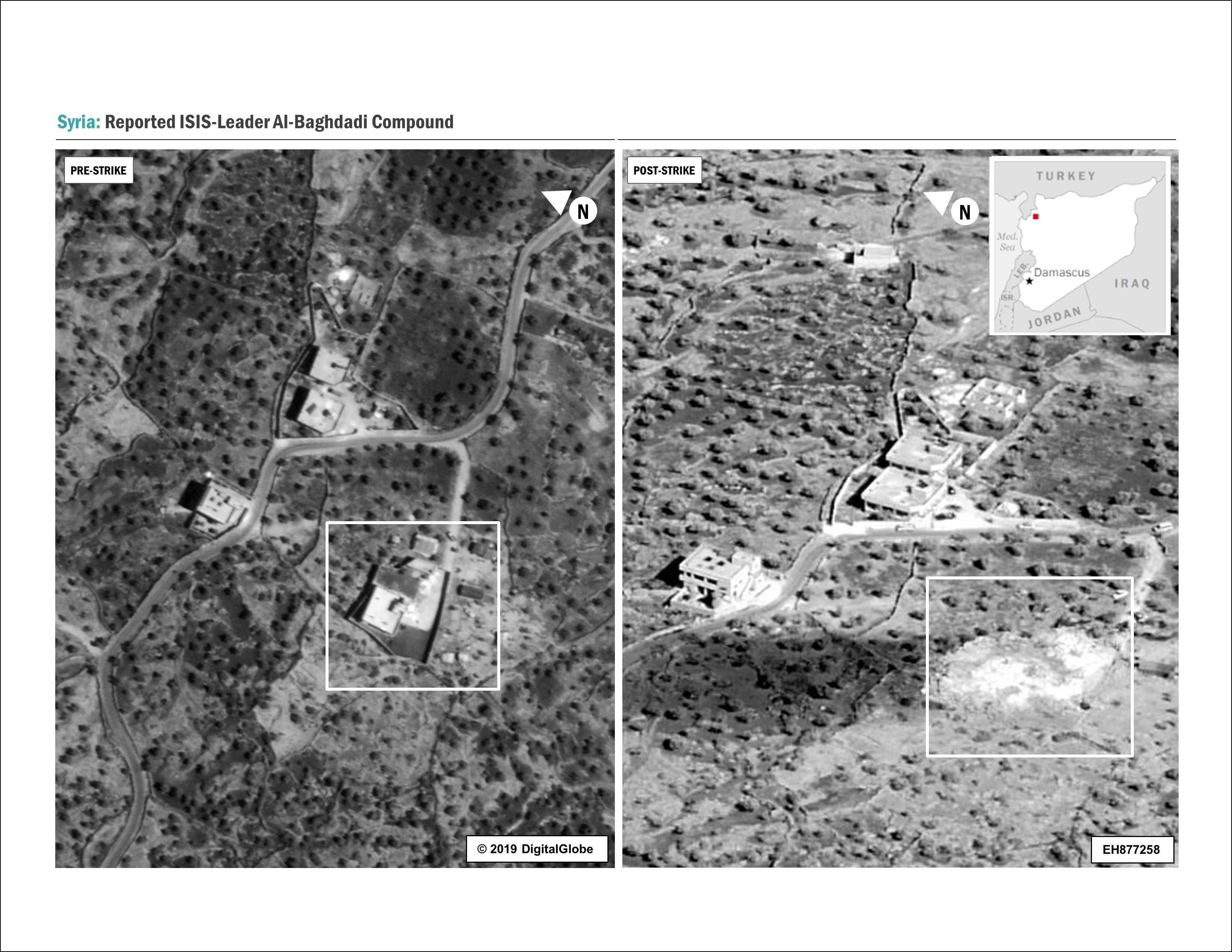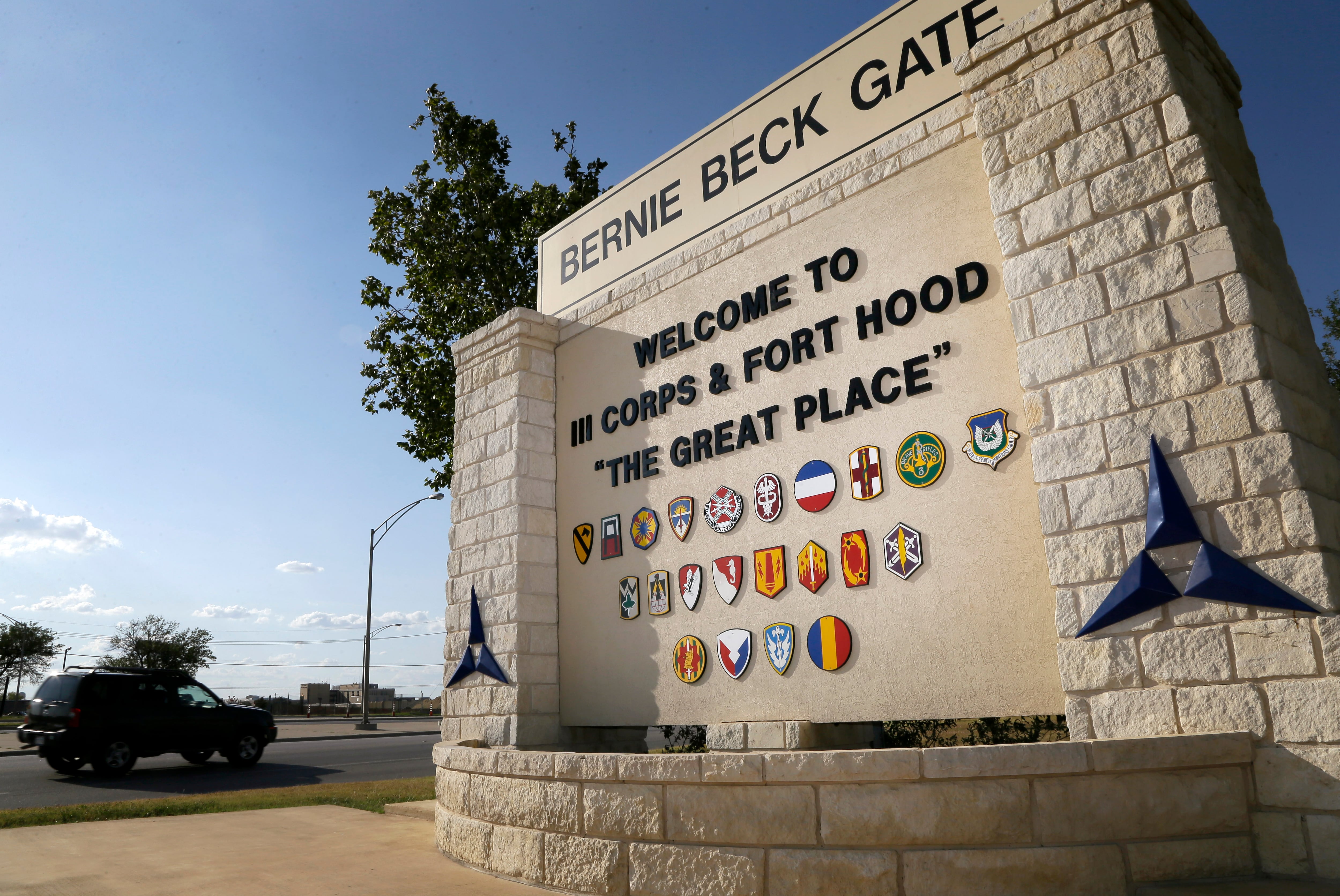Marine Gen. Kenneth F. McKenzie Jr., the commander of U.S. Central Command, told reporters Wednesday at the Pentagon that following the raid that bagged Islamic State Abu Bakr al-Baghdadi U.S. forces leveled his compound with standoff munitions.
The compound — located about 4 miles from the Turkish border near Syria’s Idlib province — now “looks pretty much like a parking lot with large potholes,” McKenzie said.
When asked if the withdrawal of troops from northeast Syria ordered by President Donald Trump ahead of Turkey’s invasion negatively impacted the mission, McKenzie responded with a resounding "absolutely not.
“We chose the time based on a variety of factors, weather, certainty, lunar data, a variety of things,” he said. “And while might have been convenient to use bases there, the United States military has the capability to go almost anywhere and support ourselves, even at great distances, so that was not a limiting factor. We struck because the time was about right to do it then, given the totality of the intelligence, and the other factors that would affect the raid force going in and coming out.”
Turkey launched an invasion Oct. 9 because it wanted to drive the U.S.-allied Kurdish forces out of a “safe zone” along the border, after U.S. President Donald Trump pulled American troops from the area.
The Pentagon released on Wednesday the first series of images and video of the raid that killed al-Baghdadi.

On Saturday, U.S. forces launched a brazen nighttime heliborne raid to capture or kill the founder and leader of ISIS, who McKenzie described as a “priority target” for U.S. Central Command. McKenzie said after briefing Trump the previous day, he gave the command from his headquarters at MacDill Air Force Base in Tampa to commence the mission.
McKenzie said the U.S. contacted military officials in Russia and Turkey to assure deconfliction.
The raid force comprised of U.S. special operators pre-staged at a base in Syria before launching on the mission, according to McKenzie. The CENTCOM commander did not elaborate how the raid force was moved to the Syrian base, but did say the operation was “far more complex” than what has been briefed.
The “complex” operation to capture or kill the elusive ISIS leader involved fourth- and fifth-generation aircraft, drones and attack helicopters, McKenzie said.
U.S. operators also swooped in on CH-47 Chinook helicopters as they flew low towards the target site.
One video shows American helicopter gunships engaging fighters near the objective who McKenzie said displayed hostile intent towards U.S. forces during the assault.
As the assault force arrived to the compound suspected of housing al-Baghdadi, fighters from two locations near the objective fired on U.S. aircraft, according to McKenzie. U.S. forces engaged and killed the fighters with two airstrikes.
McKenzie said he did not believe the fighters belonged to al-Baghdadi. There were other militant groups in the area and may not have known al-Baghdadi was staying in the compound, McKenzie said.
Some of those fighters began to move towards U.S. forces as the assault force approached the target site, potentially not knowing if the forces were part of a Turkish or U.S. military operation, McKenzie said.
A white van that displayed hostile intent was also engaged by U.S. forces, but McKenzie could not confirm how many fighters were killed.
Once on the objective, American commandos conducted tactical call outs and urged people to come out peacefully. “Every effort was made to avoid civilian casualties,” McKenzie told reporters Wednesday.
U.S. forces did engage and kill five hostile ISIS members — four women and one man — in the compound, according to McKenzie.
There was a belief that the compound contained tunnels, said McKenzie.
That belief was confirmed by interrogation of people at the site, plus a “variety of things I can’t go into, including the military working dogs, that are very good at scenting humans and going after them when they are not immediately obvious."
Al-Baghdadi crawled into a tunnel, eventually detonating a suicide vest that killed himself and two children with him. He may have fired his weapon out of the hole before he died, McKenzie said.
The ISIS leader’s demise brings the total number of ISIS fighters killed during the operation to six.
McKenzie could not confirm President Donald Trump’s claim that the ISIS leader died whimpering and crying in his final moments, but he did say al-Baghdadi crawled himself into a hole, bringing two children with him.
A military working dog who chased down the ISIS leader was wounded after the explosion. McKenzie said the dog was hurt from exposed live electrical wires in the aftermath of the detonation.
According to the CENTCOM commander, the SOCOM dog is a four-year veteran of special operations who has conducted 50 combat missions.
U.S. special operators cleared the debris from the tunnel and gathered al-Baghdadi’s remains and brought them back to the staging base.
Defense Intelligence Agency conducted a DNA test using a sample from when al-Baghdadi was a prisoner at the Camp Bucca detention facility in Iraq in 2004, according to McKenzie. The results were a “direct match," McKenzie said.
McKenzie said that CENTCOM has “no illusions” that the death of al-Baghdadi means that the group is completely defeated. He said the group will take time to reestablish itself and will likely be “disjointed.”
But McKenzie expects ISIS may try to conduct a retribution attack, which U.S. forces are postured and ready to respond to.
When asked who would get the $25 million reward that had been placed on Baghdadi, McKenzie said he didn’t know.
“That’s going to go to the dog,” joked Pentagon spokesman Jonathan Rath Hoffman.
Al-Baghdadi’s remains were buried at sea within 24 hours of his death, McKenzie said.
Shawn Snow is the senior reporter for Marine Corps Times and a Marine Corps veteran.




